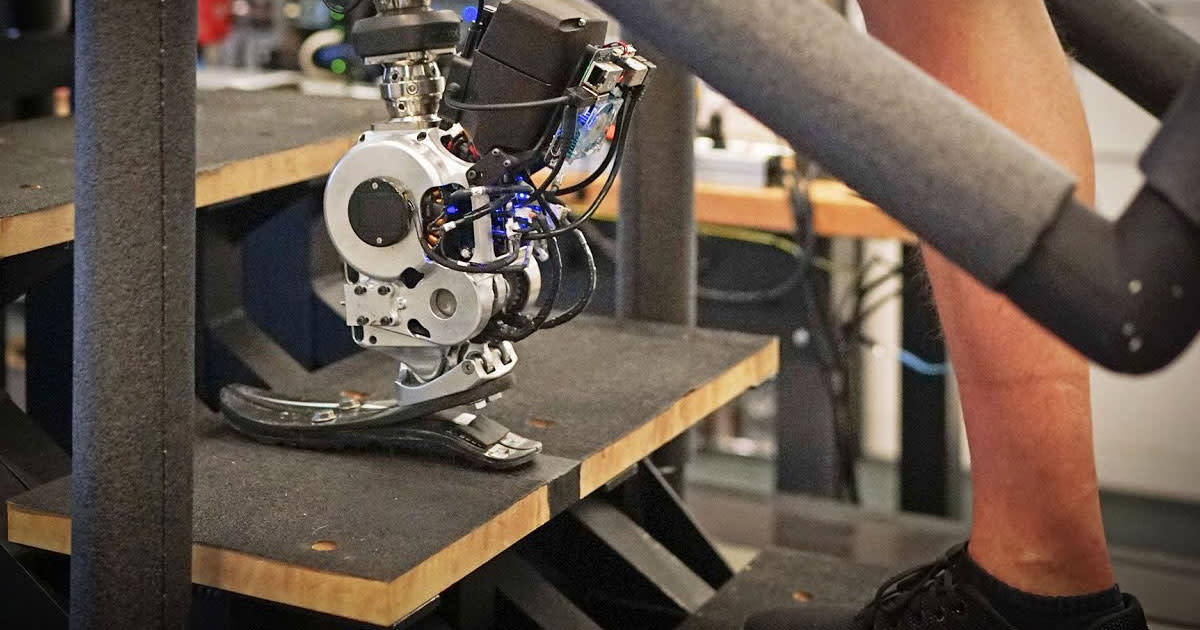New Bionic Leg Can Be Controlled by the Wearer's Brain

Researchers at MIT have developed a new prosthetic leg that can be controlled via brain signals, an achievement that could greatly enhance the experience of walking with a bionic limb for amputees.
As detailed in a new paper published in the journal Nature Medicine, the researchers found that their "neuroprosthetic" increased walking speed by a whopping 41 percent compared to a control group who received conventional prostheses, "enabling equivalent peak speeds to persons without leg amputation."
Better yet, such a device could adapt in real-time to a variety of environments such as "slopes, stairs and obstructed pathways," the researchers argue.
A video released by the team shows off just how natural it is for the user to climb a set of stairs.
"This is the first prosthetic study in history that shows a leg prosthesis under full neural modulation, where a biomimetic gait emerges," said coauthor and MIT Center for Bionics co-director Hugh Herr — who is a double amputee himself — in a statement. "No one has been able to show this level of brain control that produces a natural gait, where the human’s nervous system is controlling the movement, not a robotic control algorithm."
The study examined seven patients who underwent a special surgery called "agonist antagonist myoneural interface," (AMI) which allows them to accurately sense the position, speed, and torque of their limbs.
While robotic controllers inside conventional prosthetic legs may be able to adjust to slopes and obstacles, the wearer can't accurately sense where it is in space.
To enable a more natural gait, Herr and his colleagues came up with the AMI surgery to allow muscles to still communicate with each other inside of the residual limb.
The new prosthetic works by detecting signals the wearer's brain sends to the residual limb. By directly translating these signals into movement, the researchers found that the experience was greatly enhanced.
"Because of the AMI neuroprosthetic interface, we were able to boost that neural signaling, preserving as much as we could," said lead author and MIT Media Lab postdoc Hyungeun Song. "This was able to restore a person's neural capability to continuously and directly control the full gait, across different walking speeds, stairs, slopes, even going over obstacles."
Better yet, "not only will they be able to walk on a flat surface, but they’ll be able to go hiking or dancing because they’ll have full control over their movement," Herr told The Guardian.
"This work represents yet another step in us demonstrating what is possible in terms of restoring function in patients who suffer from severe limb injury," coauthor and Harvard Medical School associate professor Matthew Carty added.
Herr, who lost both of his legs after being caught in a blizzard in 1982, said that he's willing to try the surgery and prosthetic out on himself.
"When I walk, it feels like I’m being walked because an algorithm is sending commands to a motor, and I’m not," he told the Washington Post. He's now considering getting revision surgery to give himself similar bionic legs "in the coming years," as he told The Guardian.
More on prosthetics: Scientists Say They're Near Augmenting Human Bodies With Extra Limbs

 Yahoo News
Yahoo News 
